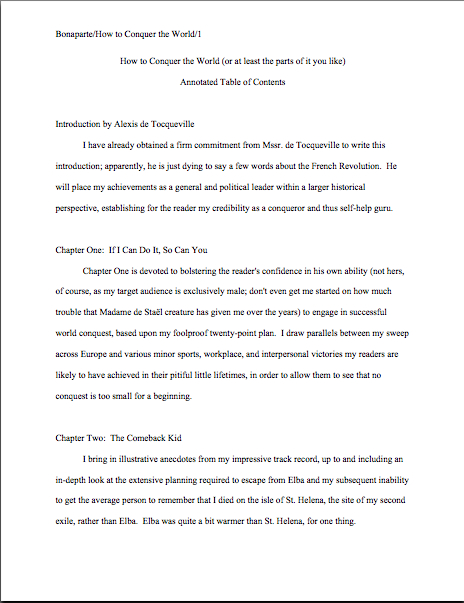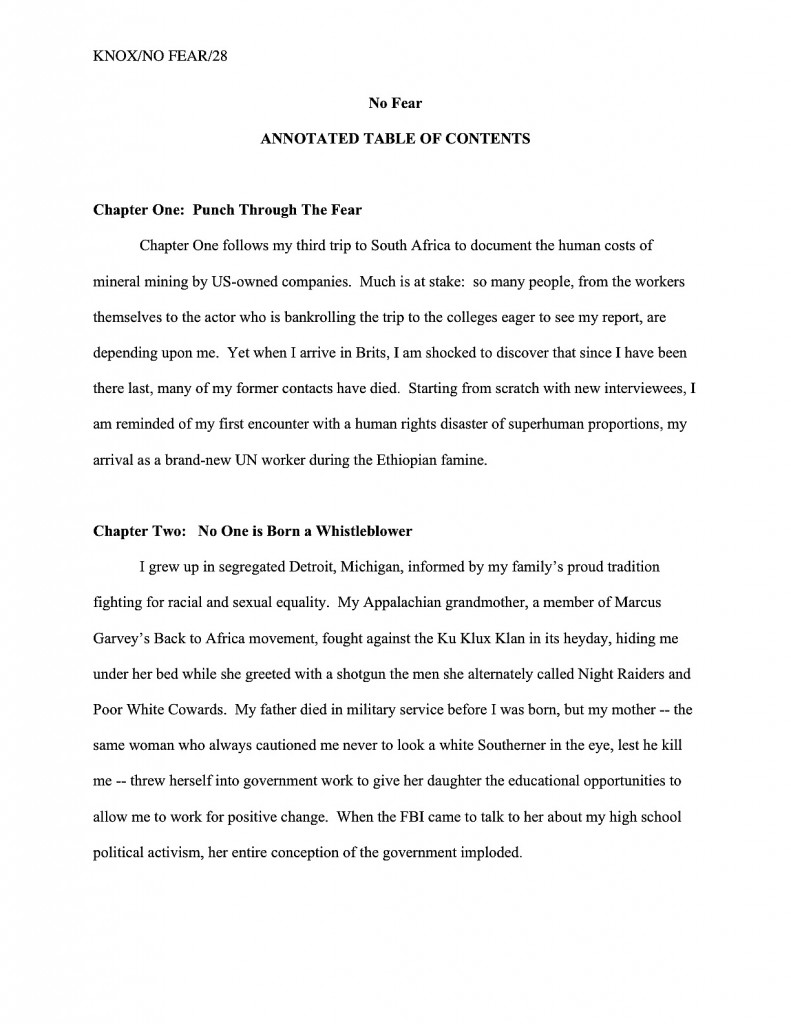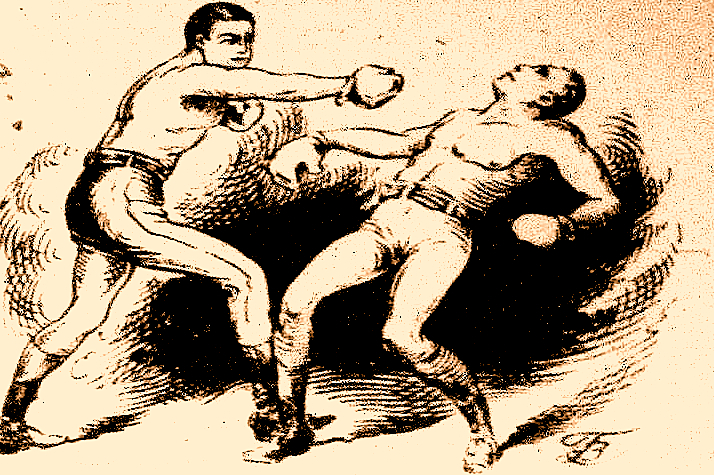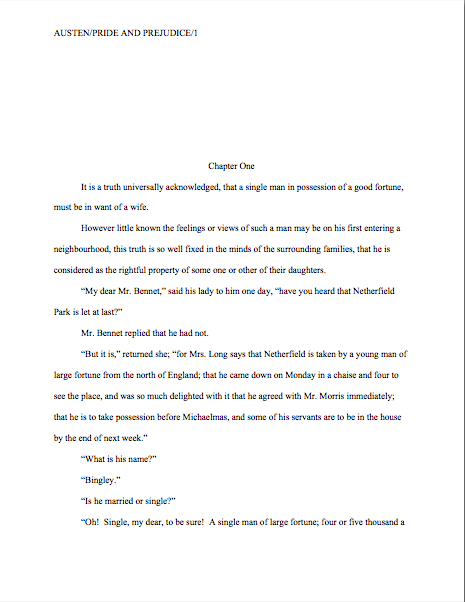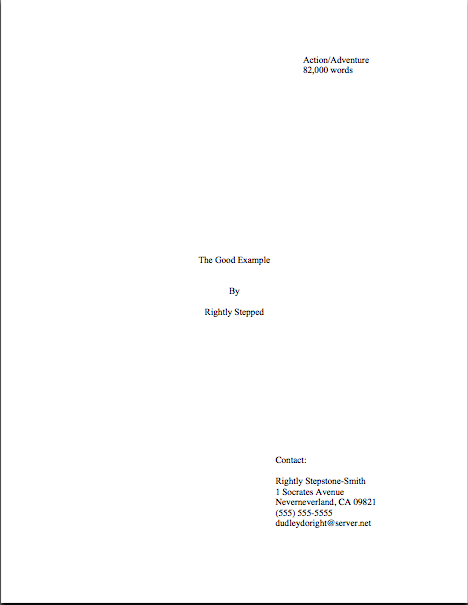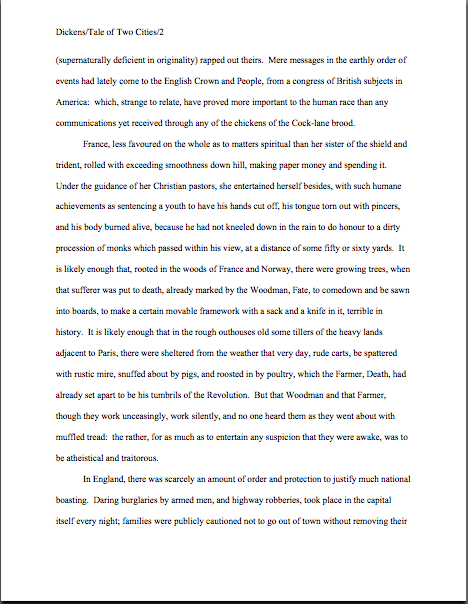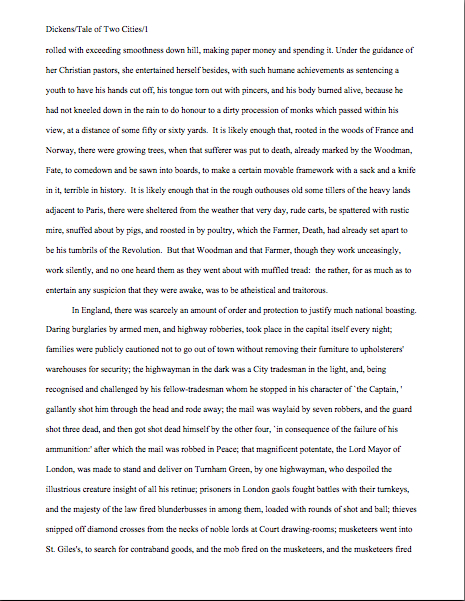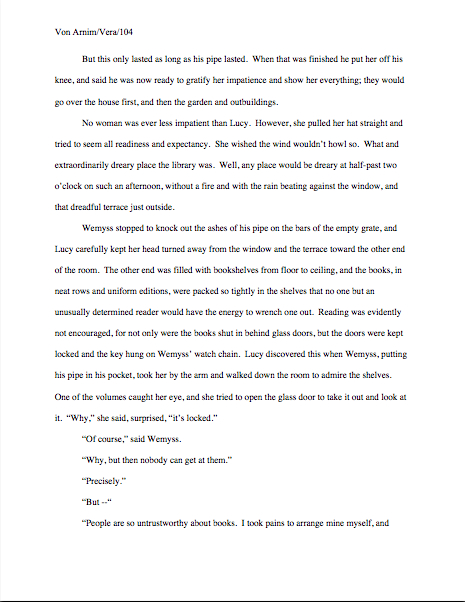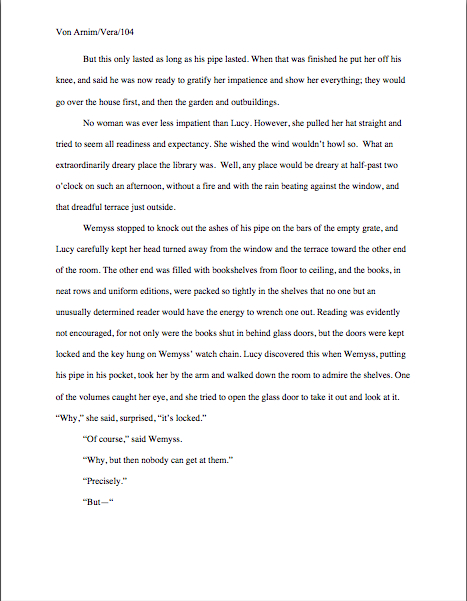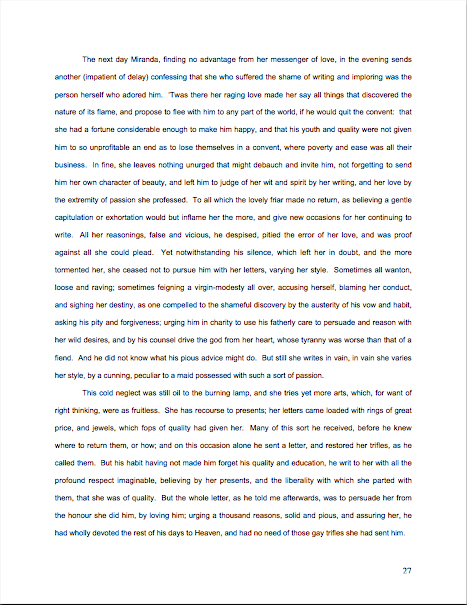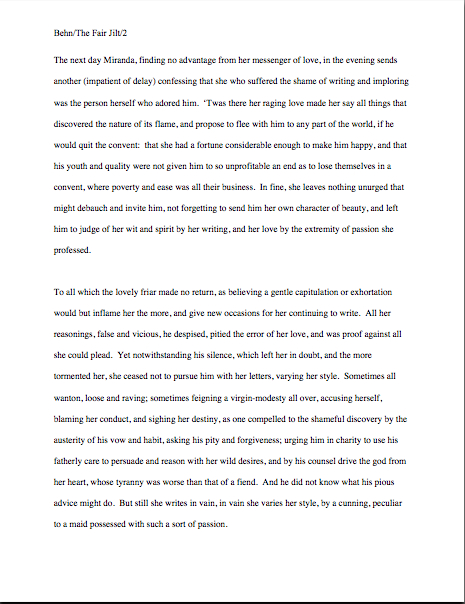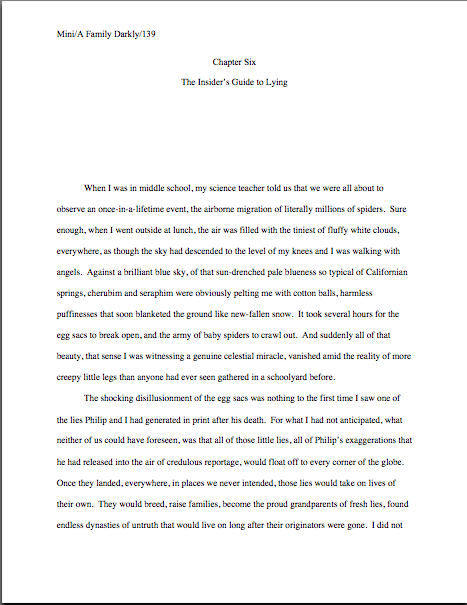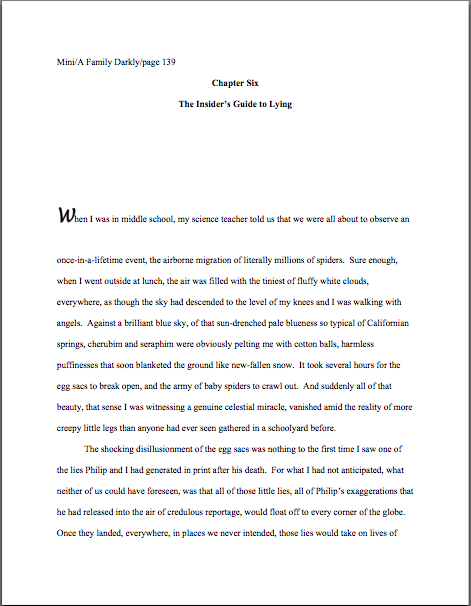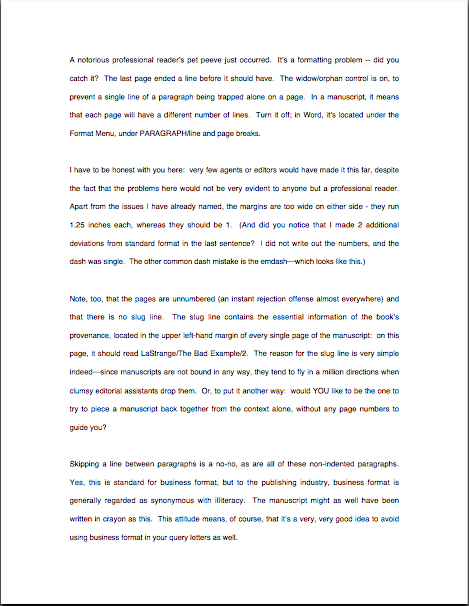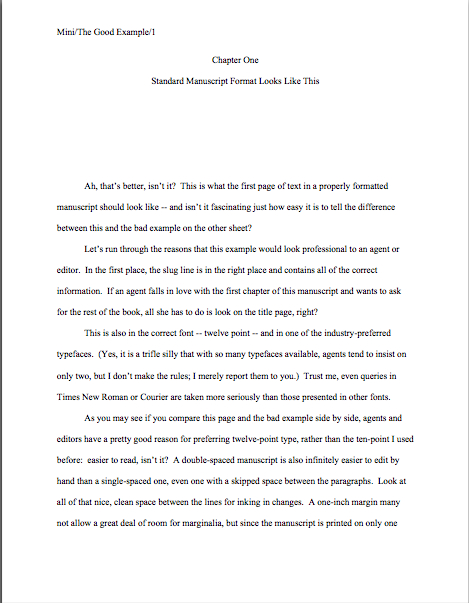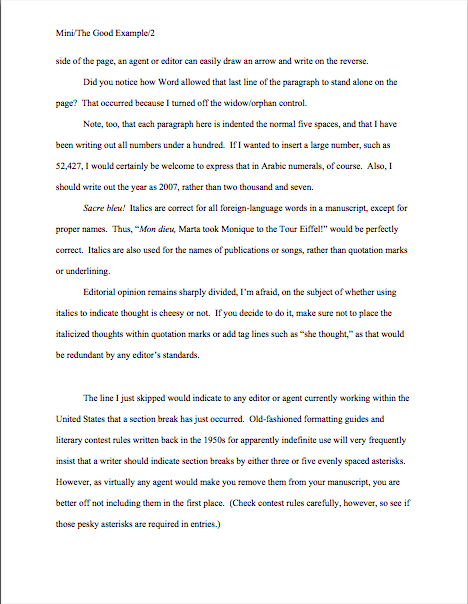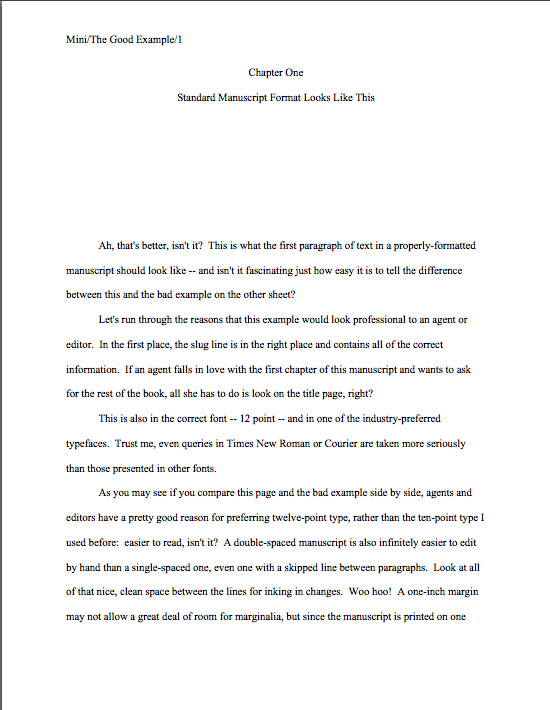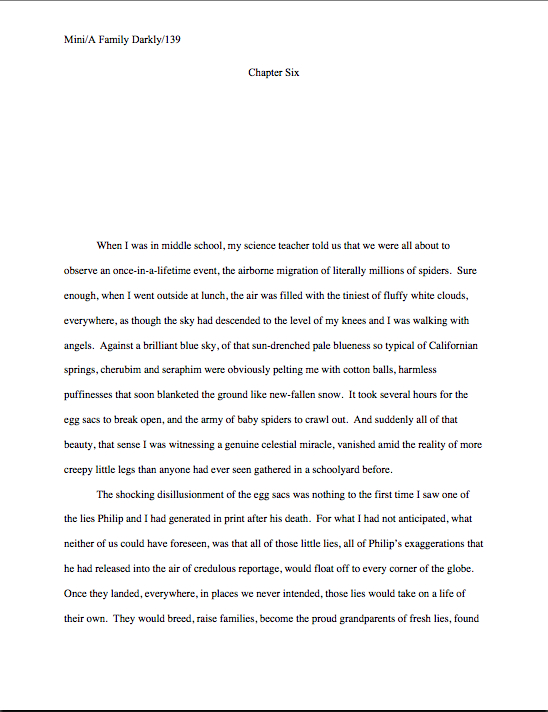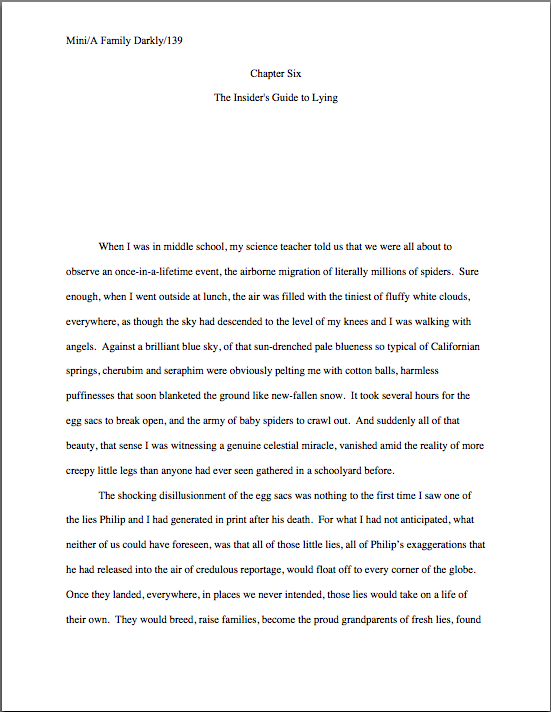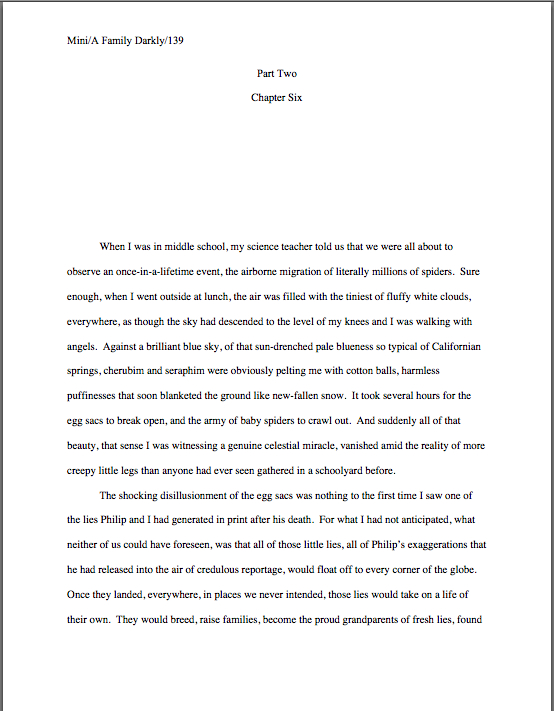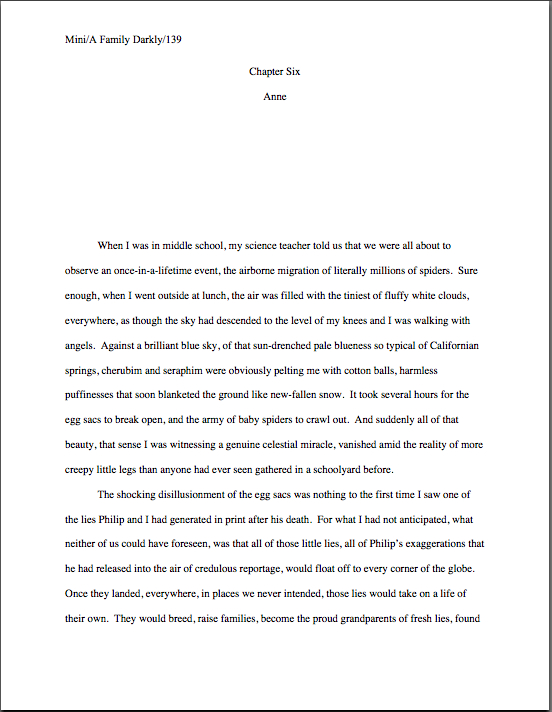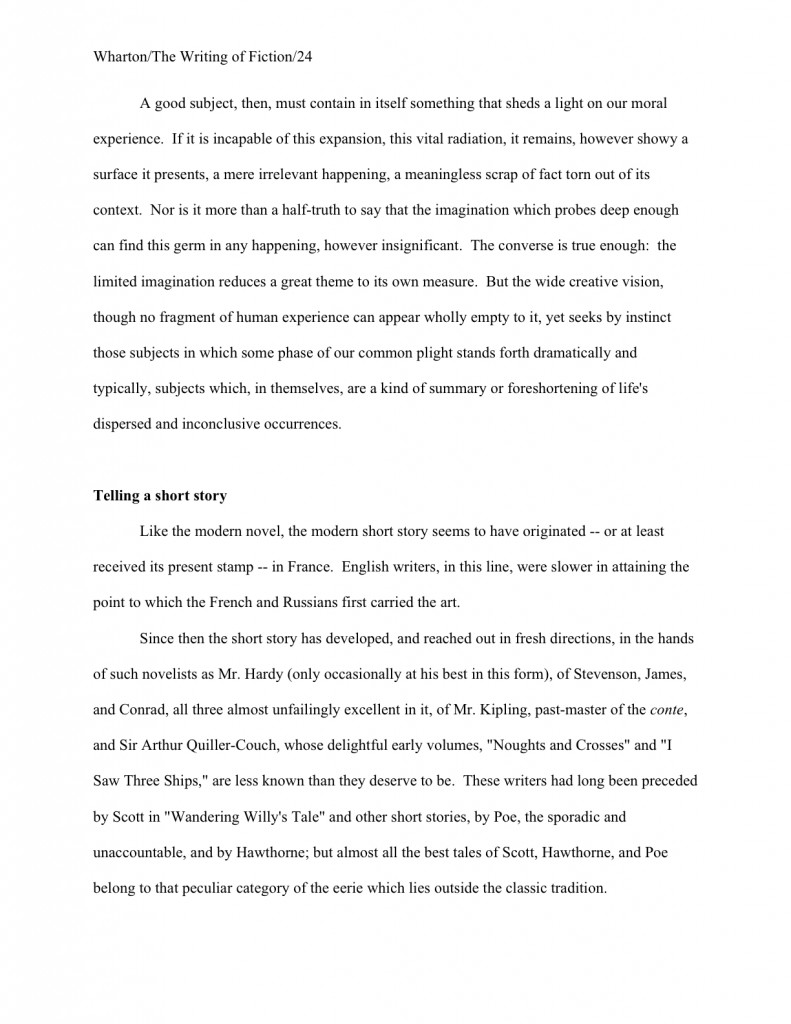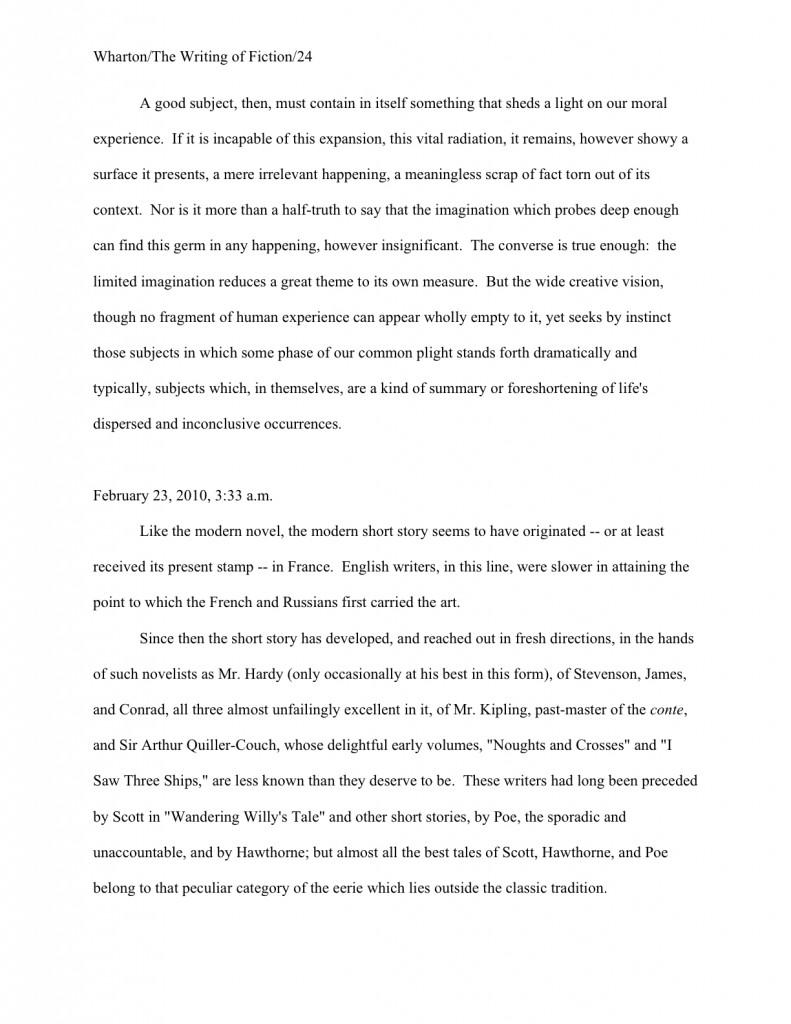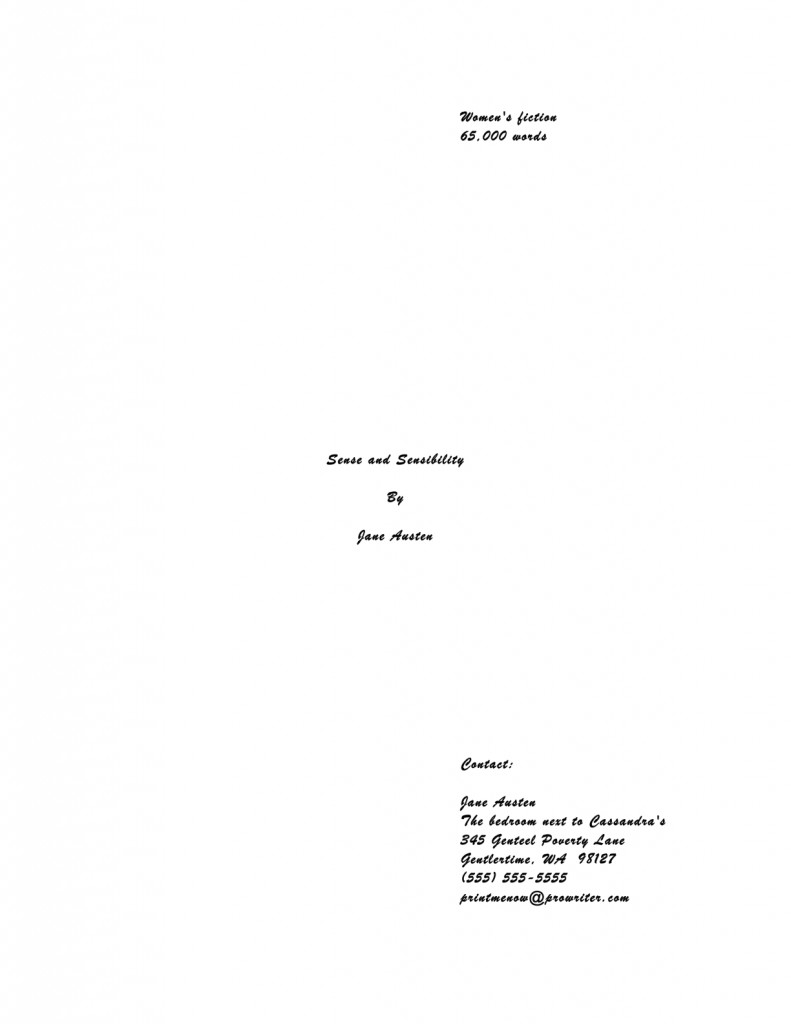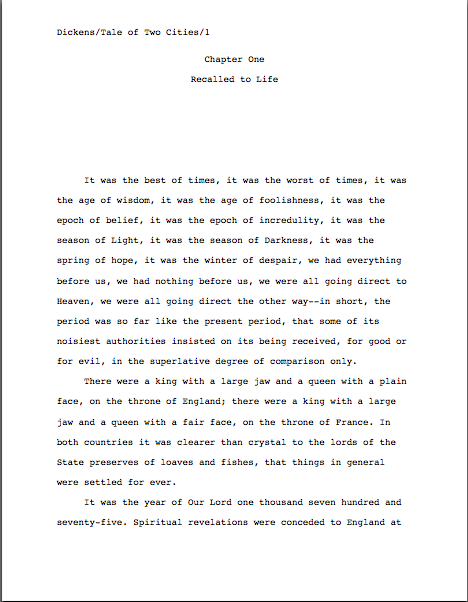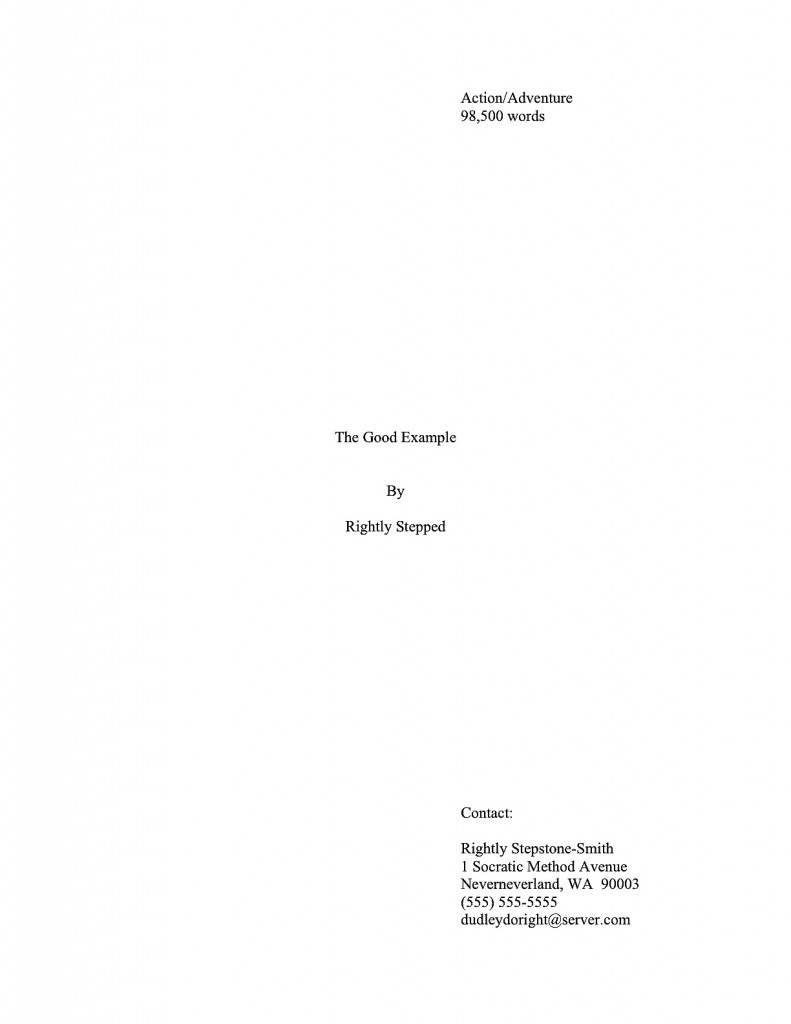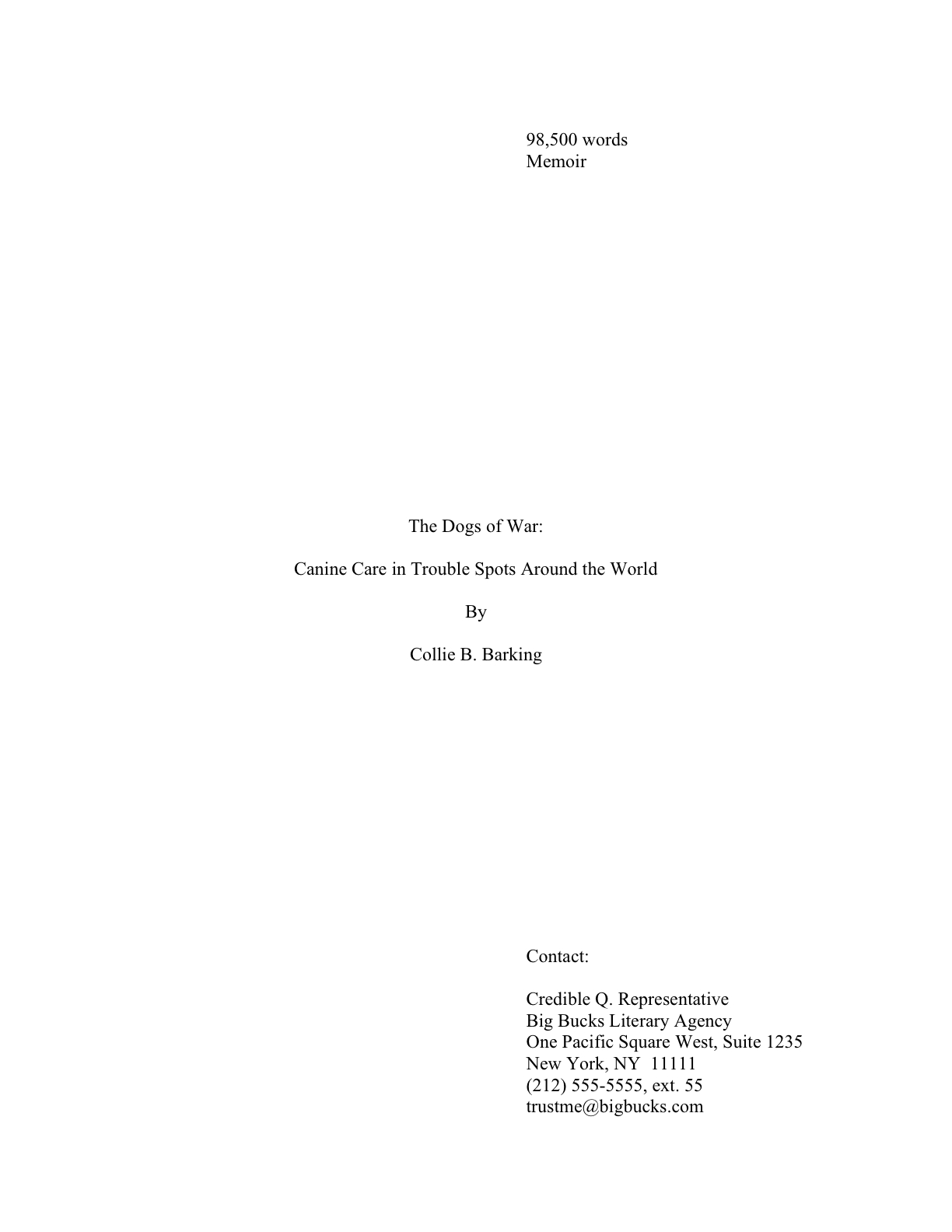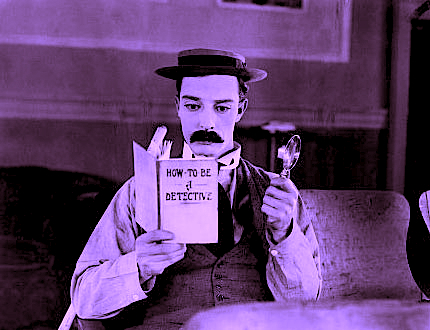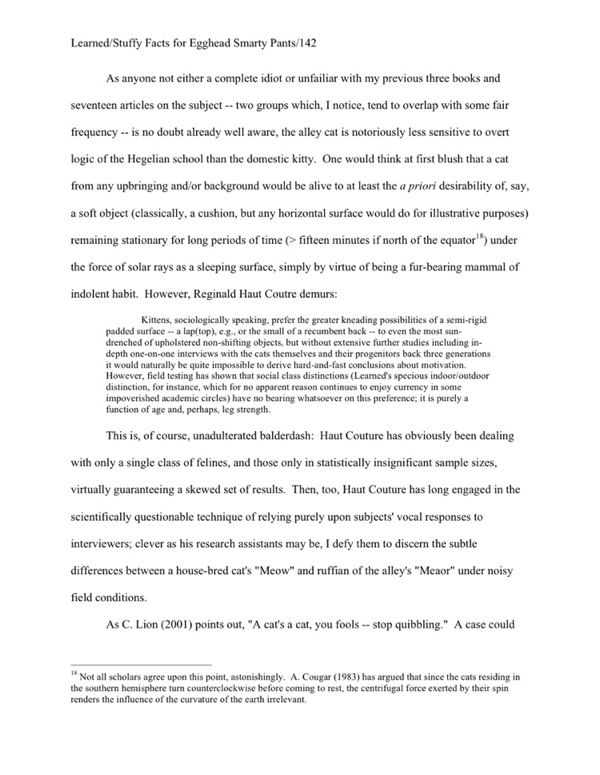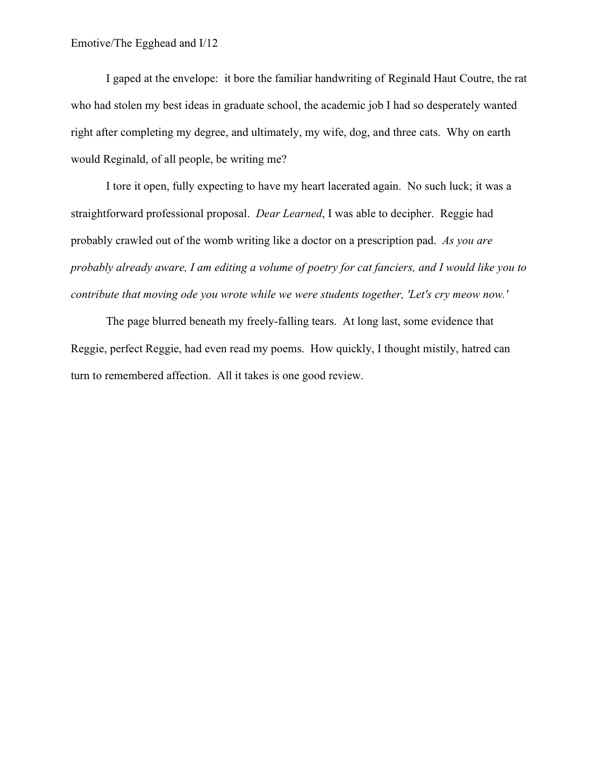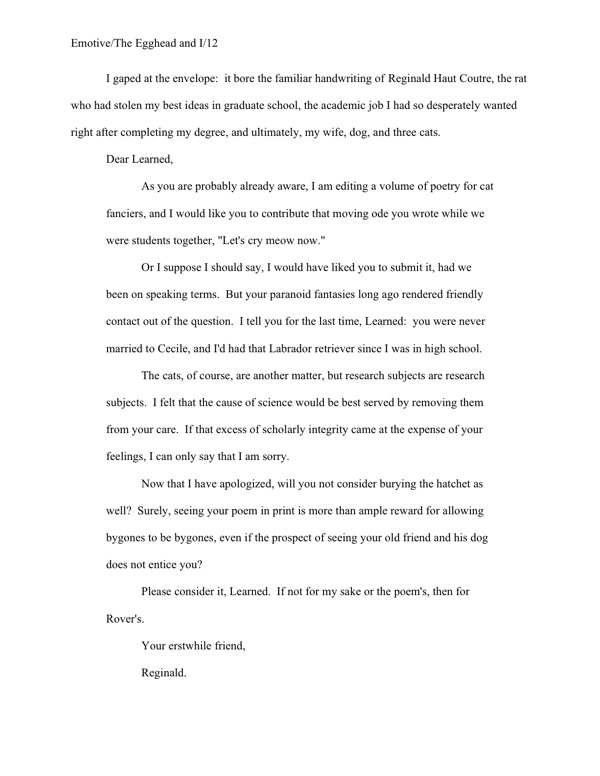
As that rather cumbersome title implies, I’m going to be finishing up my whirlwind overview of book proposal formatting today. This exciting development (hey, everything’s relative) is, of course, merely a plateau in our continuing climb toward mastery of standard format for book manuscripts. Over the days to come, I shall be wrapping that up, too, via my favorite means: answering readers’ burning questions.
So if you’ve been holding back any, waiting for someone else to ask, now would be a dandy time to leap into the fray. The comments on today’s post would be a dandy place to bring up any lingering concerns.
While I’m trolling for commentary, would anybody be interested in my following this series with a short overview of what a query letter and synopsis should look like? Please weigh in, if so — or if not, for that matter. Personally, I kind of like the idea of having all of the formatting posts back-to-back in the archives, but as I’ve dealt with query letters fairly recently, I fear to bore the masses.
Which is a rather interesting statement for someone who’s just spent weeks on end meticulously detailing small formatting distinctions to make, come to think of it. Apparently, my faith in my own writing’s inherent fascination is boundless.
As is today’s intended subject matter, as it happens. I’m determined to polish off the proposal today, so this is bound to be a long one, folks.
Before we launch into this last installment, let’s recap, shall we? (Yes, yes, I know, I’ve covered all this before, but you’d be surprised at how many writers in a hurry will read only the most recent post in a series like this.) Here, once again, are the constituent parts of the book proposal, in the order they should appear:
1. The title page
2. The overview, a comprehensive document that leaves Maury with no doubt whatsoever about how to answer the following questions:
(a) What is the proposed book will be about, and why are you the single best being with an operational circulatory system and fingers to write about it?
(b) What is the central question or problem of the book? Why the topic is important, and to whom?
(c) Why is this book needed now, as opposed to any other time in literary history?
(d) Who is the target audience for this book?
(e) Why will this book appeal to the target audience as no book currently on the market does?
(f) How will your platform enable you to reach this target audience better than anyone else who might even think about writing this book?
(g) How strong a writer are you, and is this voice appropriate to the proposed book’s subject matter and target audience?
3. The competitive market analysis
4. The annotated table of contents
Everyone relatively happy about all of those? Again, please pop a question into the comments, if not. Moving on:
5. The sample chapter(s)
Generally speaking, professional proposals use Chapter 1 as the sample, rather than one from farther into the storyline or argument, for the exceedingly simple reason that it’s usually easier for the reader to follow that way. However, that’s not strictly necessary: in a cookbook proposal, for instance, Chapter 7′s Thanksgiving feast may well wow Millicent more than Chapter 1′s general introduction to baking techniques.
Use your best judgment — but as always, be open to your future agent’s informing you that you judged wrong and that you must write another sample chapter before she submits it to editors at publishing houses. (Yes, it happens. Quite a lot, in fact.)
When making the decision about which chapter to include here, bear in mind that this section is where you’re going to provide the most direct evidence of the voice and writing style of the proposed book. Neither of which, in a good proposal, will come as a surprise to Millicent, because the entire proposal should be written in the voice of the book.
Yes, even the dry marketing parts. Hey, you’re a writer — it’s your job to make even unquestionably dull stuff interesting to read.
A whole lot more work than simply throwing the necessary materials together and hoping that the sample chapter alone is enough to convince Millicent that your voice is right for this project? Undoubtedly. But a better marketing strategy than the far more common approach of composing the rest of the proposal in the faintly exasperated tone of the jumper through unnecessary hoops? Absolutely.
On the brighter side, for a well-prepared writer, the labor involved in incorporating the sample chapter into the proposal is comparatively light. Hold your applause, but in a proposal, the sample chapter is formatted precisely like a chapter in a manuscript.
Okay, you can clap now. You know you want to.
That’s right — provided that as much of the book as you’ve written so far is already in standard format, you can simply copy and paste it into your book proposal at the proper juncture. This means, of course, that the first page of the sample chapter will have more white space at the top than any other page of the proposal. (And if you found that last statement mystifying, may I suggest that you review my earlier post on chapter openings and how they should look on the page?)
I hear some of you muttering and shuffling your feet. You want to see the difference between the first page of the sample chapter and any old page of the proposal, don’t you? Good plan.
Here, for your comparing and contrasting pleasure, is a properly-formatted first page of a proposal. (You do remember, right, that the title page is neither numbered nor included in the page count?)

That looks familiar by now, right? Because the sample chapter is a major section of the proposal, let’s review how a major section change would be designated in a proposal:
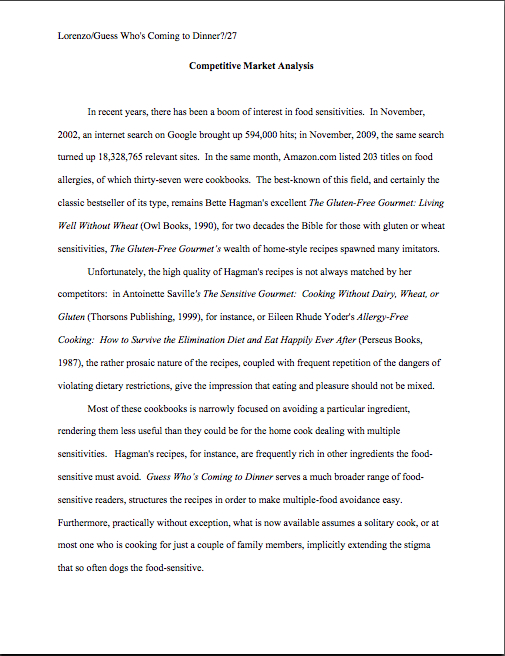
Now take a peek at a minor topic change — which, again, should be old hat by now. (Where on earth did that perverse little expression originate, I wonder?)
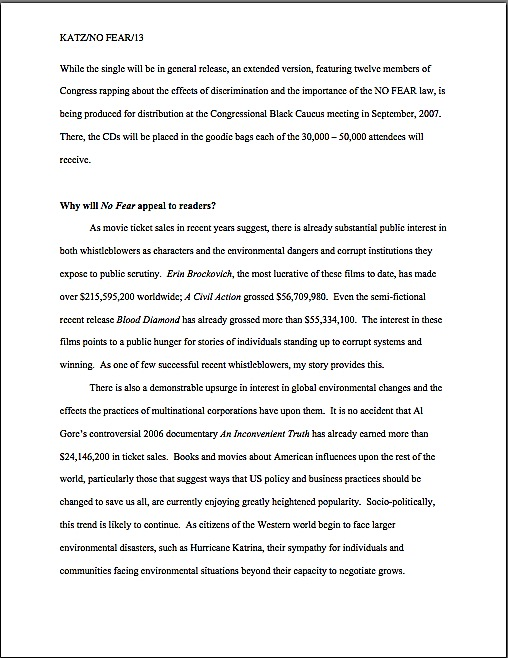
As I would devoutly hope would be abundantly clear to you by this late point in a series on standard formatting, none of the above remotely resembles the first page of a manuscript. The first page of a manuscript should, of course, look like this:
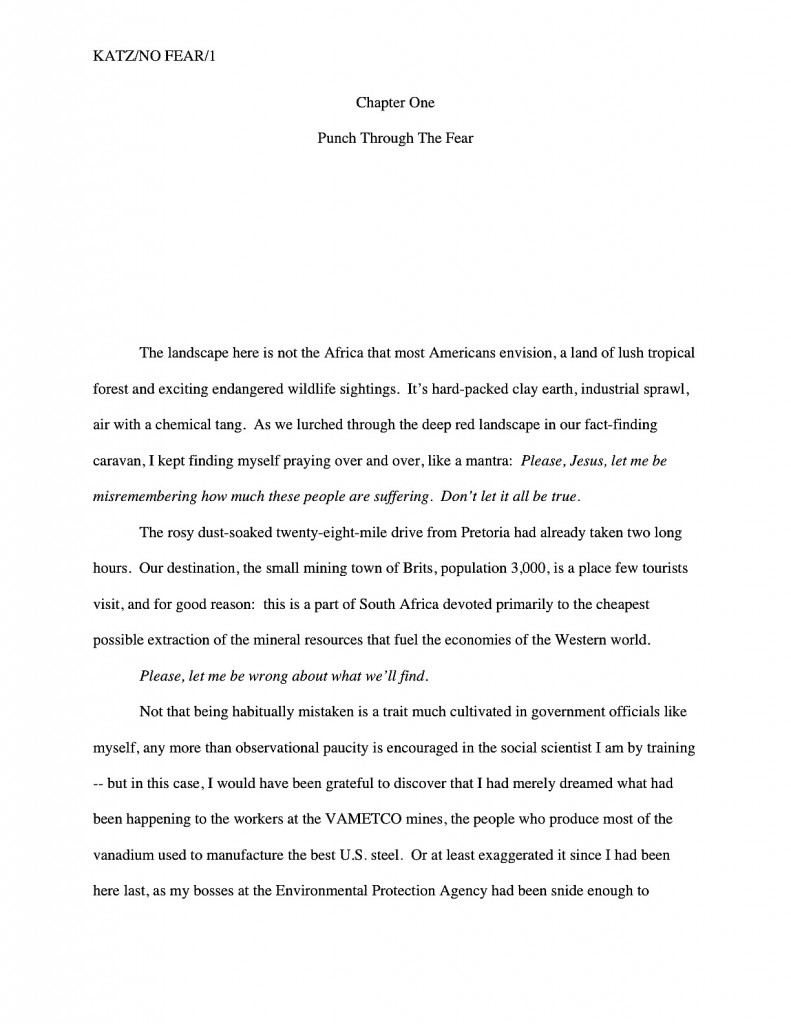
Quite a difference, is it not? Millicent could tell which was a page from a proposal and which had fluttered free of a manuscript from ten paces away.
Now take a gander at the first page of the sample chapter in a proposal:
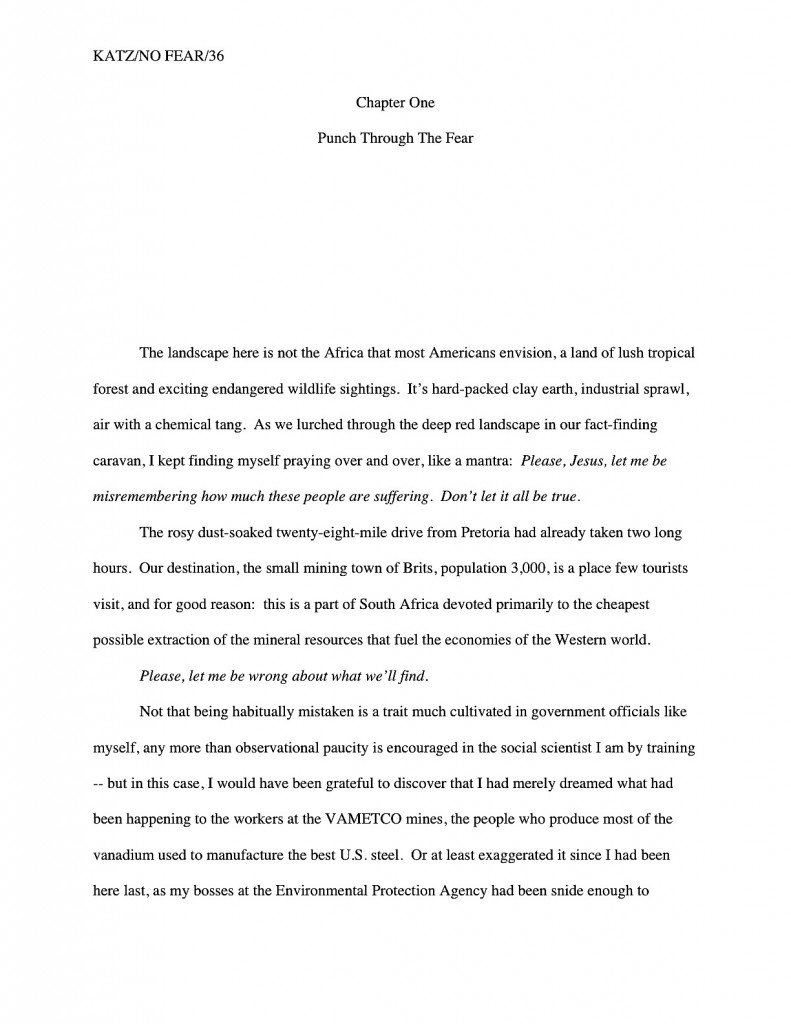
Those last two are remarkably similar, aren’t they? Pop quiz: see any formatting differences between this and the same chapter opening in the manuscript?
If you immediately leapt to your feet, exclaiming, “By Jove, Anne, the slug line clearly demonstrates that rather than starting pagination over again at page 1, the sample chapter’s first page shows where it falls within the book proposal,” congratulations: you have the eye of an editor. As you so astutely pointed out, the page numbers don’t start over at the beginning of the sample chapter; the entire proposal is numbered consecutively. For extra credit, would anyone care to guess why?
If you shouted, “To make it easier for Millicent to put the always unbound pages of the proposal back in order after she collides with someone in the hallway!” you’re really on a roll today. Help yourself to a gold star out of petty cash.
Otherwise, though, the sample chapter and the same chapter in manuscript form should be formatted identically. Realizing that, need I even add that part of what the writer is demonstrating in this section of the proposal is a familiarity with the standards of this industry?
Not to mention the tone and vocabulary norms of your chosen book category. I probably should mention it, though, because many a well-argued and even well-written book proposal has gotten rejected because the prose in the sample chapter just didn’t sound like, well, a book in that category.
As always, if you’re not familiar with what’s currently being published in your chosen book category, why not? And how on earth did you manage to write a convincing competitive market analysis without being up on all the recent releases, anyway?
I’m most emphatically not kidding about this: from an agent or editor’s point of view, a book proposer’s being conversant with the norms, trends, and current market for the type of book she’s proposing is not an optional extra — it’s a basic requirement. It comes standard with the professional nonfiction writer package.
Don’t tell me you can’t afford to buy everything that comes out in your category, either; that’s what libraries and bookstores with comfortable reading chairs are for.
One final word about the sample chapter before I move on to the remaining bits of the proposal: make absolutely sure that the sample chapter delivers on the promise of that chapter’s summary in the annotated table of contents. If there’s any doubt whatsoever in your mind about whether it fulfills that promise — or if it does not represent your best writing — either pick another chapter to use as your sample or start revising.
Cursory sample chapters are the bane of any proposal-reading Millicent or Maury’s existence, and for good reason: if their attention has been sufficiently grabbed by the overview and maintained throughout the middle part of the proposal, it’s a genuine disappointment to discover a sample chapter that just lies there. If they’ve read that far, trust me, they want — and expect — to be wowed.
They also expect that the sample chapter will demonstrate how you intend to flesh out the brief chapter summaries in the annotated table of contents, and rightly so. If the two parts of the proposal appear to be out of sync, M & M are going to wonder if your writing skills are up to the task of producing a consistent final manuscript.
Don’t tempt them to speculate on that score. Call me cynical, but I’ve seldom seen that type of speculation end well for the proposer. It’s not a screener’s job to give proposers the benefit of the doubt, after all.
Speaking of doing one’s job, it’s about time that I talked about the remaining elements of the proposal, isn’t it? Don’t worry; there aren’t many.
6. The author bio
Since writing a stellar author bio is an art form of its own, I’m not even going to attempt to describe here how to write one. For an in-depth discussion of the subject, please consult the aptly-named HOW TO WRITE AN AUTHOR BIO category on the archive list at right.
Seriously, go consult it. Again, this is a place where many first-time proposers skimp, thinking (erroneously, alas) that since they’ve already talked about their platforms earlier in the proposal, all that’s really necessary in the author bio is the kind of bare-bones, just-the-facts-ma’am author bios they’re accustomed to seeing inside the dust jackets of hardcover books. Do not, I implore you, be fooled by those brief paragraphs going by the same moniker as what’s required in a book proposal.
The purpose of an author bio in a book proposal is to provide a handy single-page summary of the writer’s platform for writing this particular book. That means, in practice, that a savvy writer may choose to use different author bio text — or even author photos — in proposals for different books.
Not sure why? Okay, tell me: if you were vacillating between acquiring two books on dog breeding, which bio would appeal to you more, one that simply lists the writer’s previous publications and credentials under a smiling head shot — or one that listed eight dog-related credentials under a snapshot of the writer with his arm around a happy Dalmatian?
No contest, is there?
Do not, for the sake of your own happiness, leave constructing your bio to the end of the proposal-writing process. It’s hard; budget time for it. Why? Well, really apt author bios are hard to write — and most of us go through quite a few photos before we find one of ourselves that we like.
Don’t believe me? Okay, care to guess how many shots my quite gifted photographer friend Marjon Floris took before she caught the one in my bio?
Somewhere in the neighborhood of 800. With two cameras. (Thank goodness for digital technology, eh?) Admittedly, my whole family is pretty camera-shy — my brother’s wedding photographer actually burst into tears during the reception, so frustrated was he at the difficulty of catching candids of any of us wily Minis — but still, a good author photo often takes a lot of trial and error.
Speaking of the camera-shy, am I seeing some of you waggling your fingertips in my peripheral vision? “But Anne,” the photography-averse murmur, making faces at the camera, “I don’t want to include a picture of myself in my bio; believe me, my book’s appeal would in no way be enhanced by a photo of me clutching a Dalmatian, or indeed, any creature whatsoever, warm- or cold-blooded. Can’t I, you know, skip it?”
You’re not going to believe this, but the answer is yes.
At least in a book proposal; it’s more or less de rigueur these days in a bio accompanying a manuscript submission. (Hey, both Millicent and Maury will want to be able to tell their bosses if the new writer they’ve just discovered is photogenic — like it or not, it does sometimes make a difference in marketing these days.)
Without an author photo, a proposal bio is simply another double-spaced single page of text with a title at the top. Here, for instance, is the super-serious bio I used a few years ago in the proposal for the political book I’ve been using as an example all day:

7. Relevant clippings, if any
This is another platform-proving exercise: if you have written articles, or even other books, it’s customary to include beautifully sharp photocopies of a few of them at the end of your book proposal. Similarly, if you happen to be famous enough for articles to have been written about you and your subject matter, feel free to include ‘em here — provided, in this second case, that they relate to your platform for this particular book.
Since our primary concern in this series is formatting (although I suspect that salient fact may have slipped all of our minds while I’ve been chatting at length about the content of a good book proposal; hey, I’m chatty), I’m going to leave to another time in-depth discussion of how to generate clippings. For now, I’ll content myself with urging you to make sure that the copies are pristine, with nice, clear, readable type.
Oh, and one other thing: do yourself a favor and scan each of the clippings, or have a computer-savvy someone do it for you. Not only will this enable you to submit your proposal to agents and small publishers who prefer online submissions (still relatively rare for nonfiction, but growing in popularity by the day), but it will also save you quite a bit of time down the line, once you’re working with an agent.
Why? Well, it has become quite common for agents to submit book proposals electronically to editors. Unscanned clippings can’t go into a virtual proposal, right?
Pant, pant, pant. Don’t stop running now — we’re practically at the end.
8. The proposal folder
I’ve written about this fairly extensively in the HOW TO WRITE A BOOK PROPOSAL series (conveniently gathered under the category of the same name on the archive list at right), so I’m not going to delve too deeply into the particulars. Except to say: in the United States, book proposals are presented in plain black folders.
Period. Don’t even consider trying to get fancy — and whatever you do, do not bind your proposal in any way. Let those pages flap around loose, just as they do in a manuscript.
Well, not quite the same: tuck the pages (neatly please) into the folder, items 1-4 on the left-hand side (i.e., everything prior to the sample chapter), items 5-7 (the sample chapter and beyond on the right).
Don’t label the folder on the front, either; keep it plain. What Millicent, Maury, and everybody else in the industry expects to see coming out of a submission envelope is this:
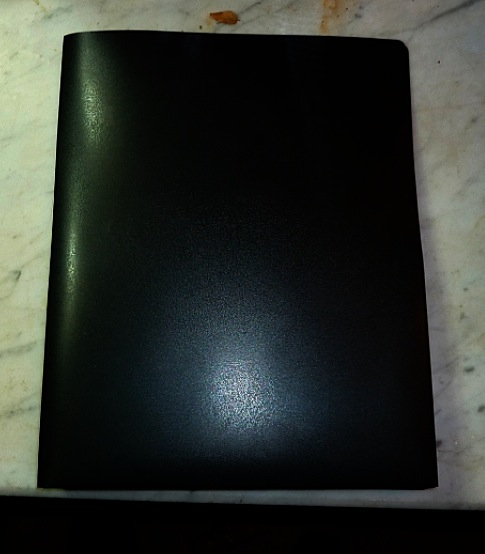
I know: boring. That’s the way they like it.
The folders in question, by the way, are the ones with horizontal pockets inside, not the ones with brads in the middle. The latter are for high school book reports, the former for book proposals, and ne’er the twain shall meet. So if the folder in your hand does not look like this when you open it:
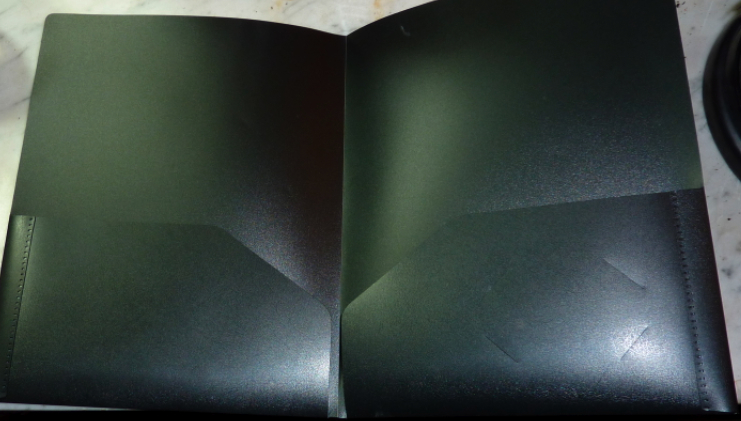
scuttle on back to the office supply story and pick up one that does. Seriously, proposals in the wrong kind of folder will just look unprofessional to the pros.
And that — whew! — is a lightning-swift (for me) discussion of how to format a book proposal. Congratulations on absorbing so much practical information so rapidly, campers, and keep up the good work!

